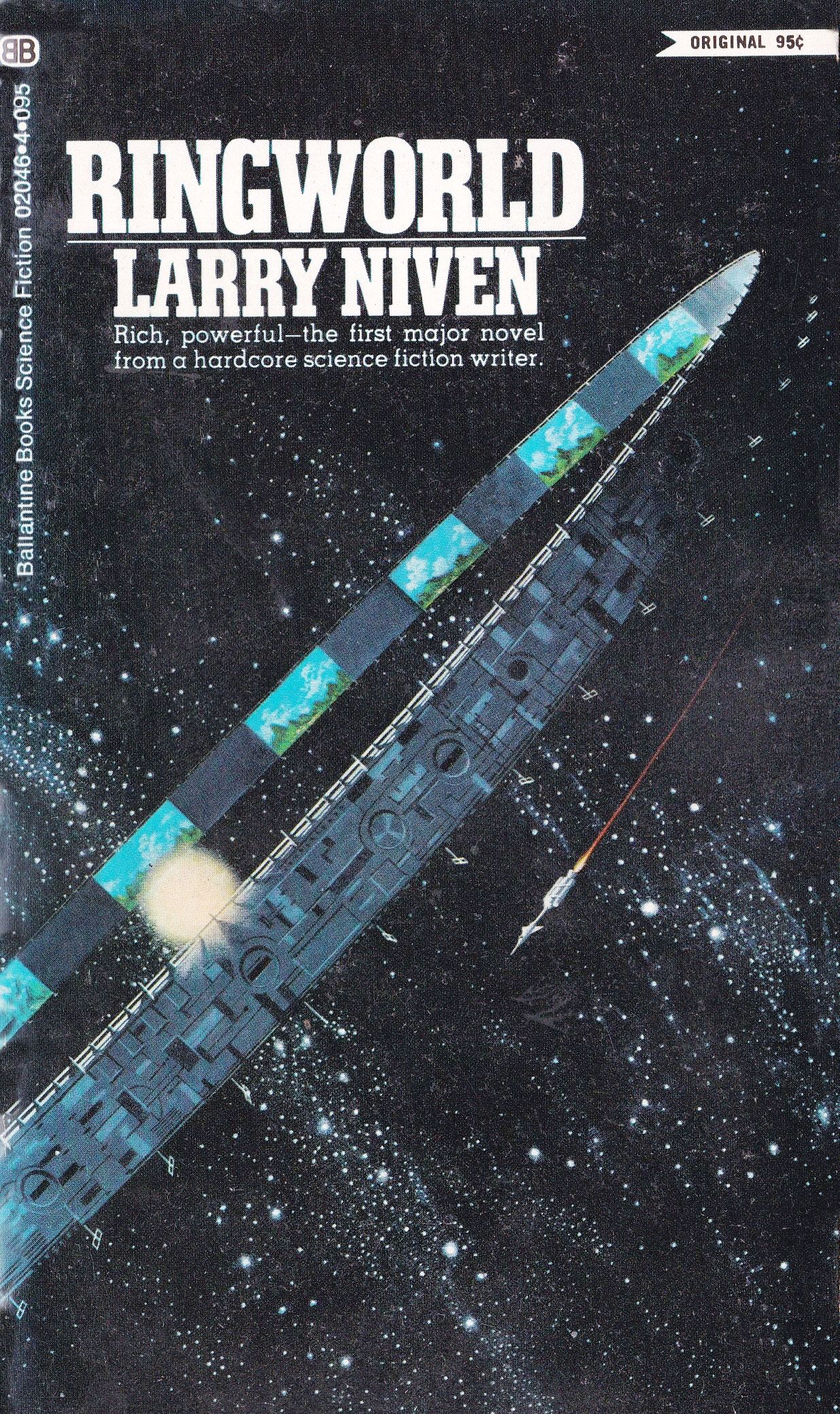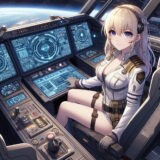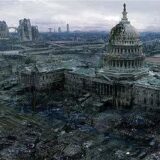As a youngster in the 1960’s, I was an avid reader of science fiction and fantasy, and fed my voracious appetite by emptying the shelves of my local library – six books at a time – of those early pioneers of the genre. You’ll most likely remember some of them: Dune – by Frank Herbert; Do Androids Dream of Electric Sheep? – by Philip K. Dick; Strangers in a Strange Land – by Robert A, Heinlein; The Left Hand of Darkness – by Ursula K. Le Guin; 2001: A Space Odyssey – by Arthur C. Clark; The Stainless Steel Rat – by Harry Harrison, and Lord of the Rings – by J. R. R. Tolkien, to name a few. . . (And I honestly do mean a few).
Seriously! I read a LOT, explaining the warped and fragile vagaries of my mind as it is today.
As I got older and started to buy books – and an extensive collection with it – I was always on the lookout for new and exciting authors. And there were no shortage of them. Douglas Adams, Poul Anderson, Stephen Donaldson, Terry Brooks, Raymond E. Feist, Anne McCaffrey, Julian May, etc. . .
And of course, Larry Niven, whose novel, Ringworld, I first came across in Waterstone’s Book Shop, back in Birmingham, UK, in 1971 . . . if memory serves correct. (One of my favorite places on Earth, as it was a former art deco hotel covering oh so many floors, all of them filled with delightful bibliographic portals into other worlds).

I particularly remember the eye-catching cover. That of a huge ring in space, with what looked like a miniature sun, burning away in the exact center of the mega-girdle, the epic scene countered by a tiny starship flying by its environs outside. As soon as I saw it, I though . . . Mine!
And I was very glad I did.
***
Here’s a condensed version of the story arc.
In the year 2850, Louis Gridley Wu is celebrating his 200th birthday. Something he can do, thanks to the longevity drug, ‘booster spice,’ which keeps you in perfect physical condition. He meets Nessus, a Pierson’s puppeteer, who, without going into too many details, offers him a job. Intrigued, Louis eventually accepts, and ends up being crewed with Speaker-to-Animals (Speaker), a Kzin, and Teela Brown, a young human woman who later becomes a love interest of our main protagonist, Louis.
It’s not until they get to the puppeteer home world that they are told that the expedition’s goal is to investigate something they’ve uncovered – the Ringworld – a gigantic artificial band, to see if it poses a threat. (What that threat might be, exactly, isn’t revealed . . . giving you a hint, early on, that there might be things going on behind the scenes that will come back to bite them).
The Ringworld itself is about one million miles wide and approximately the same diameter as Earth’s orbit, and as such, it is able to encircle a sunlike star. The disc rotates to provide artificial gravity, corresponding, roughly, to standing on the Earth’s surface, and has a habitable, flat inner surface (equivalent in area to approximately three million Earths). There’s a breathable atmosphere too, and the temperature seems ideal for humans. Night is provided, thanks to an inner ring of shadow squares which are connected to each other by thin, ultra-strong wire.
Again, why this would be a danger is not explained, but Louis is informed that if the crew completes their mission, then they will be given the starship in which they travelled to the puppeteer home world as payment. (A big deal, as it is orders of magnitude faster than any tech currently in the possession of humans or Kzinti).
Suitably motivated, our intrepid crew sets off, and when they reach the vicinity of the Ringworld, find themselves unable to contact anyone after their ship is disabled by the Ringworld’s automated meteoroid-defense system. Not only that, but the severely damaged vessel also collides with a strand of shadow-square wire and crash-lands near a huge mountain, ominously named, “Fist-of-God”.
The crash destroys the fusion drive, meaning they are unable to launch themselves back into space, where they could use the undamaged faster-than-light hyperdrive to return home.
And. . .?

Ah, that would be telling.
However, I will highlight that the ensuing adventure hinges around the original mission – to investigate the ring and uncover its secrets – and now, finding a way to get home, or at the very least, getting their ship into space where they can ignite the hyperdrive.
And that’s all I’ll say, as I don’t want to spoil the story for those of you who haven’t actually read the book yet. But as you can imagine, because Ringworld was published way back in the early 1970’s, you’ll be treated to a classic-age saga where our heroes and heroines end up facing off against huge obstacles, anticipated dangers, unexpected enemies, and plot-twisting revelations.
But how good is it?
Following its release in 1970, Ringworld won a Nebula Award later that same year, as well as both the Hugo Award and Locus Award in 1971. It was considered a classic of science fiction literature, and spawned a series of additional sequels, prequels and other works, all set in the Known Space Universe.
However, the original novel itself also began to divide opinion. Some of it unnecessarily nitpicky, in my opinion, as Niven did make a few ‘mistakes’ in his original text. For example, in the opening chapter of the original paperback edition of Ringworld, Louis Wu teleports eastward around the Earth in order to extend his birthday. Now, as you can appreciate, moving in this direction would, in fact, shorten the day, not extend it. (Ouch) A faux pas that Niven was ‘endlessly teased’ about, and which he corrected in subsequent printings to show Wu teleporting westward.
In fact, in his dedication to The Ringworld Engineers, a follow-up novel, Niven went so far as to say: “If you own a first paperback edition of Ringworld, it’s the one with the mistakes in it. It’s worth money.”
Yes, he made a technical mistake. It somehow slipped through the editing process. And he corrected it. Job done. (And let’s be honest, it didn’t detract from a really fantastic story).
However, it set the vultures to circling, with engineers and scientists alike subsequently trying to find fault with the Ringworld itself, and those details referencing scientific – at that time – facts.
Me?
I have to say, I’m one of those who doesn’t make a big deal out of such things, as I hinted going into this section of the review. I didn’t at the time, (though I was only 10, and another decade would pass before my educational leanings guided me along a path that delved into the wonders of astrophysics), and I haven’t taken issue since then. He made a few mistakes . . . So what? I’ve been a fan of well-known, respected authors like Stephen R. Donaldson, Raymond E. Feist, Ursula K. le Guin, and Julian May for decades. And like Niven, all of them have made the odd slipup here and there. Big deal, it doesn’t detract from the fact that they write g-r-e-a-t stories.
So, what attitude steers my reading?
I concentrate on the “ripping-yarn” aspect.
And Ringworld really is a ripping yarn. It’s a science fiction epic with sooo many fantastical elements, that its appeal was bound to be as broad as it was deep. Think about it, you have a noble quest – grounded firmly in an otherworldly setting – undertaken by a ragtag bunch of heroes and heroines who set off to achieve their objective against seemingly overwhelming odds. There’s unknown, almost godlike tech, hierarchical power struggles, treachery, hidden dangers, and plot twists. The world building is tremendous, and yet there’s a familiarity to our main protagonist’s struggles that keep things entirely relatable. It’s an epic journey about the marvel of discovery and exploration, of self realization, and finding your place in the greater scheme of things. And, perhaps most importantly of all, it appeals to the adventurer in us all who yearns to uncover what’s out there and how we fit in.
And I’m not the only one who feels this way.
If you stop and reflect on some of the later works of fiction, and also on the films and video games that have come our way since then, you can see the influence of Larry Niven’s Ringworld, simmering away in the background. Want some examples?
Okay, I’ll summarize them:
Think of Terry Pratchett’s novel, Strata; Ernest Cline’s, Ready Player One (and its world-spanning virtual reality network); William R. Forstchen’s The Alexandrian Ring; Episode 5 of The Book of Boba Fett that features a station called Glavis that is shaped like a ring and features sun shades in much the same way that Niven’s does; the sprawling megacities of Judge Dredd; and of course, how could I make a list like this and not mention the awesome 343 Industries – Halo – (now on TV – series 2 coming soon – woo-hoo!).
So, although it had been years . . . cough, okay, decades since I last read Larry Niven, I remember him fondly for introducing me to the idea of the vast unknown. And, thanks to a little free time on my hands, I’ve recently reacquainted myself with someone who is, arguably, one of the most influential science fiction writers of the past 50 years.

But that’s just my opinion.
What are your thoughts?











Recent Comments